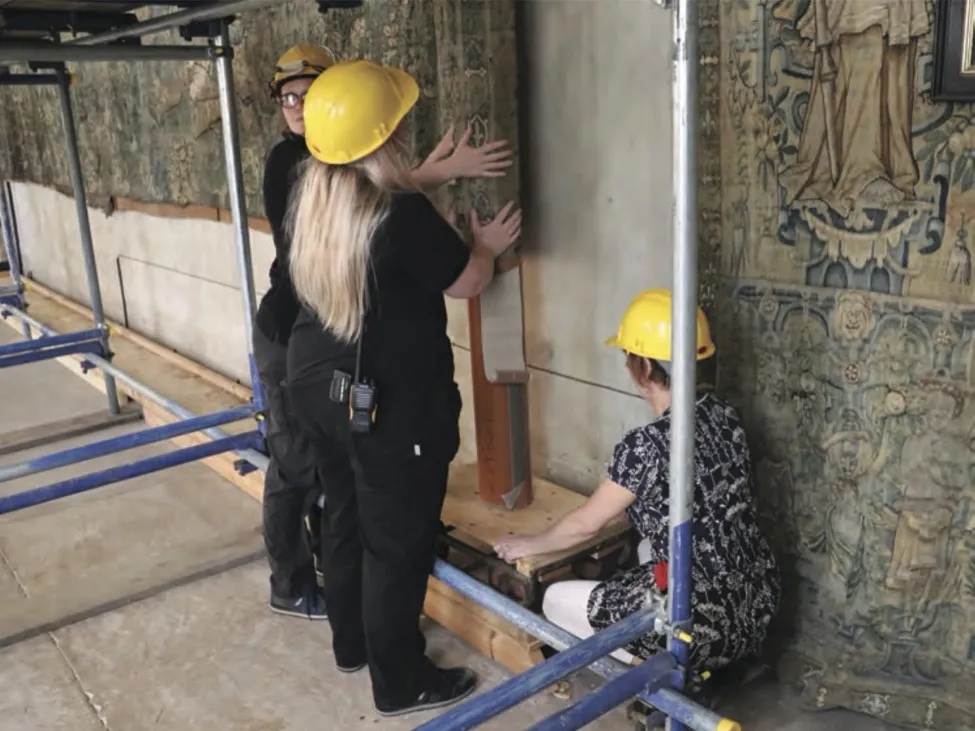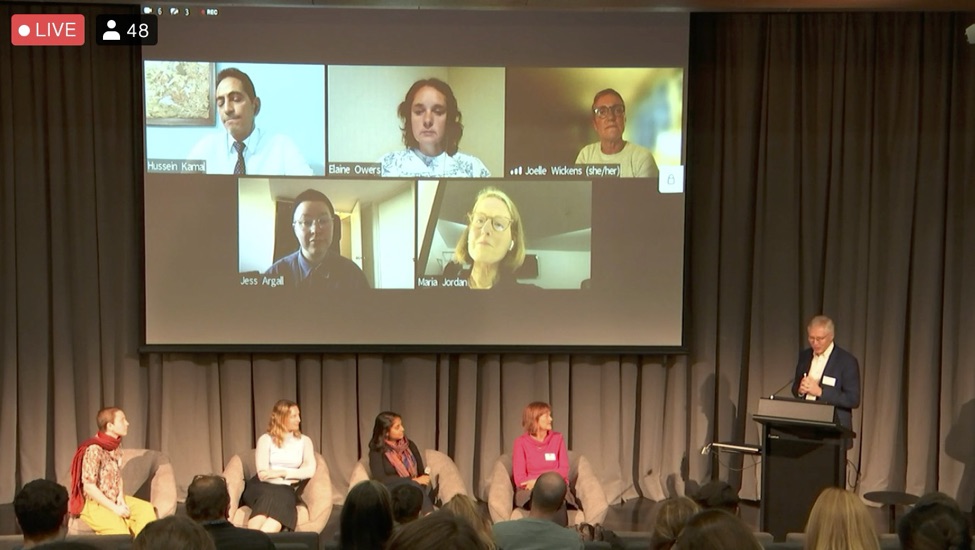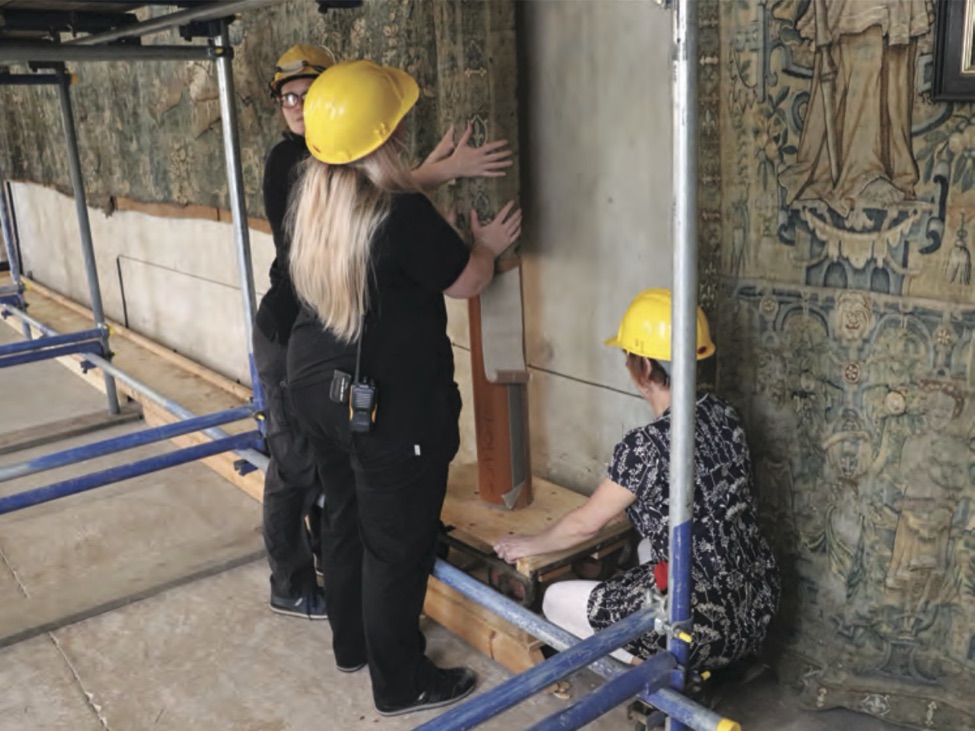Session 4: Leadership and Management
Submitted by Kate Smith on 08 Sep 2022

Jessica Argall & Rachel Davis
Wednesday in Wellington started off with talks focusing on leadership and management in conservation. Anisha Gupta led the day’s presentations discussing her work with Joelle Wickens. They delved into the dominant, white supremacy culture (WSC) in the United States and how this affects the conservation profession. The use of a ‘white supremacy’ label for this dominant culture might be confronting, but as Gupta extrapolated, this was not a discussion of white nationalism, riots, and the Ku Klux Klan, but rather focused on the attitudes and behaviours seen in the white, dominant culture of the United States. Some of these behaviours described by Tema Okun and Kenneth Jones, are seen as benefits for a conservator, such as perfectionism and objectivity. However, these characteristics are ultimately exclusionary, and do not promote diversity in the profession.

What I was really taken with in regards to Gupta and Wicken’s work, was the recognition that they had previously judged a program - the Fellowship in Native American Collection Care - as successful, based on paternalistic WSC parameters and values. However, looking at the programme through the lens of those it aimed to help, it was realised it could not be judged in the same way, and maybe could no longer be viewed as successful. The honest re-evaluation is something we may wish to shy away from, however, as Gupta expanded on in the Q&A session following the presentations, we can learn to pick apart our actions as we go, or better, from the outset, and start to dismantle the often unseen WSC behaviours.
The view from Australia: Collingwood Collective Melbourne
Australian conservators Eleanor Vallier and Hanna Sandgren then presented on the establishment of the Collingwood Collective in Melbourne. The collective was formed in response to a precarious, contract-based conservation job market and decreasing funding for the arts directly affecting conservation employment. The benefits of their model, in which multiple conservation businesses share studio space and resources, allows the members to assign jobs to relevant businesses according to each other's strengths, tackle large contracts and share knowledge with one another. It strikes me that this kind of model really promotes the interdisciplinarity of conservation and could be a tangible method of acting on diversity in conservation. The nature of the conservation job market has been well discussed at numerous points throughout the Congress, and as such, this presentation led me to wonder whether collective conservation models could be taken up in a variety of geographical locations and in response to varied circumstances.
Teamworking at the Grand Egyptian Museum
Dr Hussein Kamal presented a discussion (read to the audience by Jane Henderson) on how the large number of different teams at the Grand Egyptian Museum (GEM) came together to present some of the best results for the conservation and display of their amazing and unique collection. As the saying goes, teamwork makes the dream work, and collaboration appears to be key in this example. In these kinds of case studies, I find it most interesting to hear what went wrong, and how those problems were overcome. In particular, Kamal describes how team had to adapt mounts after conservation changes dimensions of the objects after treatment.
Working large scale and long term: tapestry conservation at the UK’s National Trust

Elaine Owers and Maria Jordan presented on the large scale, long term conservation of the UK National Trust’s sixteenth century set of tapestries The Story of Gideon. With a methodology initially conceived in 1997, treatment began in 2021. During the Q&A, Owers and Jordan noted the significant challenges of such a project, including being part of a very large organisation; executing a project over a long period; keeping to timelines; juggling priorities; the practicality of the large tapestries; and the level of management involved in balancing all of these factors. Further detailed in their paper is the tackling of the project by multiple conservation studios, funding challenges and changes in management over time. Despite such challenges, the nature of the project allowed for the adaptation and improvement of methodologies and the establishment of good working relationships with ‘keen and supportive’ property managers who the authors trust will well look after the tapestries into the future.
Change is coming: how do we make that positive?
Lastly, Jane Henderson wrapped up the topics with a discussion on how to effect positive change. The conservation field has often been stereotyped as the people who say “no”, and seen as trying to halt change in many ways. But as one of her slides explained, in all caps no less, CHANGE IS COMING - so how can conservators embrace this, and make sure it is positive and inclusive? Her talk and paper delve into this eloquently, and provides an inspiring means for how we can take action with our interactions with colleagues and communities.
Through discussions of both major projects and the sector at large, today’s presentations on leadership and management encouraged conservators to consider, interrogate and be finely attuned to their position and relationships in a variety of contexts. As has been a thread throughout many sessions, presenters encouraged people-centred approaches and the absolutely critical importance of community and collaboration. These papers ask that we, as individuals and a profession, not only embrace change but advocate for it, welcoming the challenges and improvements that it poses to our methods of leadership and management.
AUTHORS:
Jessica is a Masters student at the Grimwade Centre for Cultural Materials Conservation.
Rachel is also a Masters student at the Grimwade Centre for Cultural Materials Conservation.